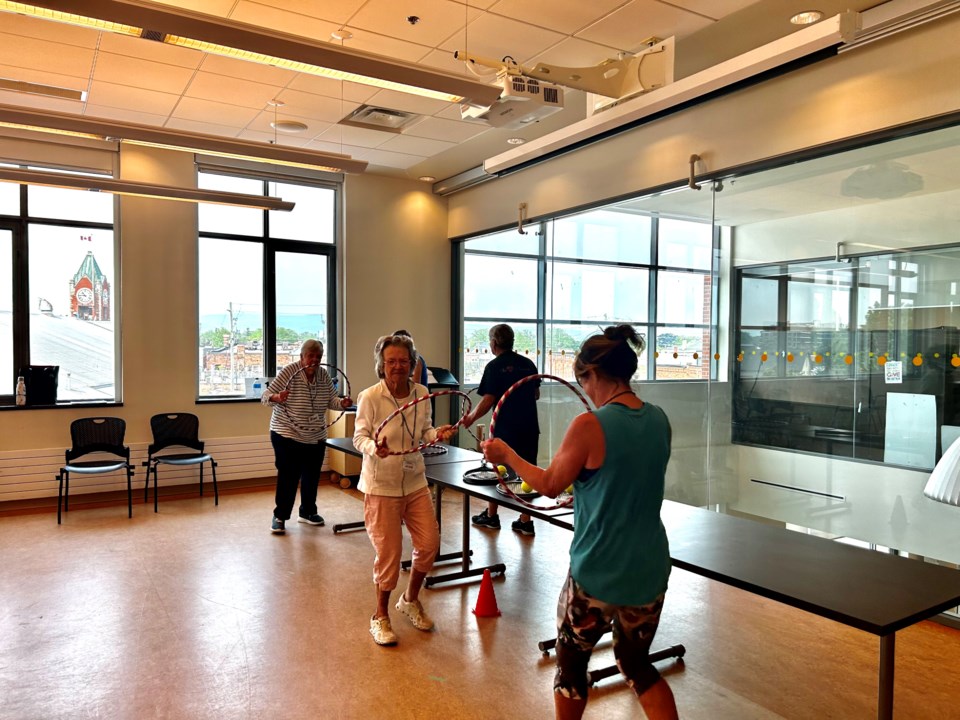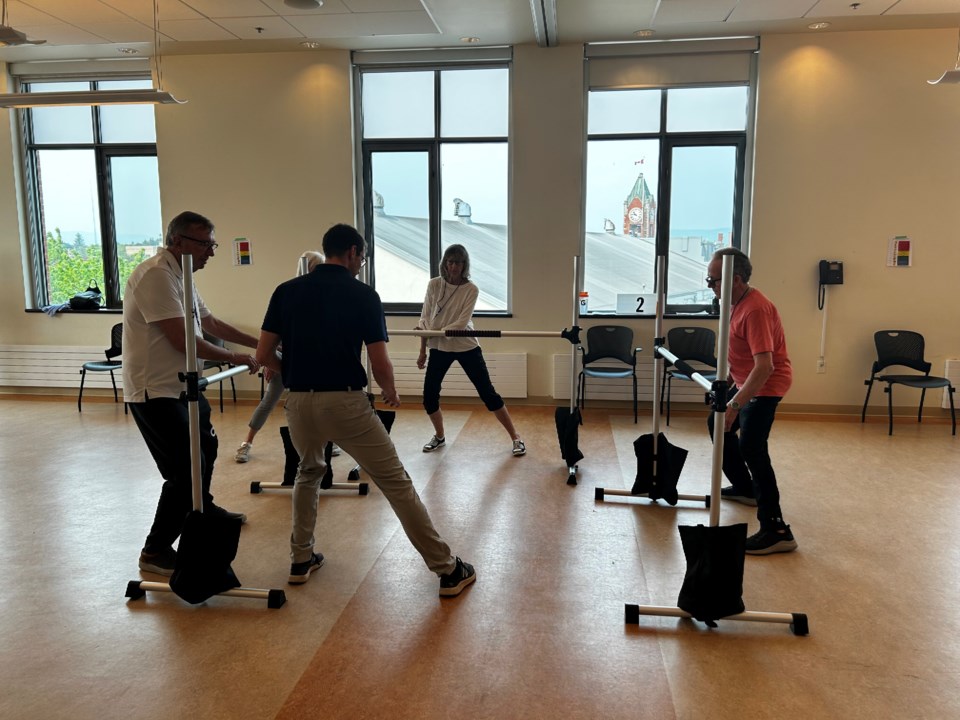Taking the time to move can have an impact on one's time on earth, and for a group of people living with Parkinson's disease, it can be a significant impact.
A new program being tested in Collingwood offers a chance for people with Parkinson's disease to participate in exercise classes twice a week with the aim of improving their balance and mobility capacity as well as helping prevent falls and injuries.

For one of the participants in the pilot program, a group exercise class has been not only a positive social experience, but uplifting mentally and physically too.
"It's made all the difference," said Paul Gordon, who was first diagnosed with Parkinson's disease 3.5 years ago, though his symptoms started about five years ago.
"If you don't move, you're done," he said in an interview before the exercise class on Tuesday, June 6 in the community rooms at the Collingwood Public Library.
He admits that Parkinson's disease is exhausting physically, but it takes a major mental toll too, particularly because his life-long profession had him working with his hands in construction.
"You wake up every morning and you make a decision, you can try or not try," he said. "So I wake up every day and I think, 'I'm up, I'm alive, and that's something.'"
He's enjoying the twice-a-week classes, which are run by trainers certified under the TIME program.
"I'm ready to rock," he says, as the warm-up music – a tune recorded for Canada's 150th birthday featuring Indigenous performers – starts to lay down the rhythm and instructor Louise Stewart Potts leads the movements from her chair.
Together in Movement and Exercise (known as TIME) is a community-based program designed by physiotherapists at the University Health Network's Toronto Rehabilitation Institute and designed for people with balance and mobility challenges, among them would be stroke survivors.
In Collingwood, a pilot project led by the non-profit Living Better with Parkinson's is bringing a group of about 15 people living with Parkinson's disease through the exercise sessions for about ten weeks, with two classes a week.
Potts is one of the instructors in the Collingwood pilot program, which wraps up at the end of June, and has been working with people with Parkinson's disease through Dance for Parkinson's Canada.

She runs the warm-ups and leads the dance station, one of three workout stations, that is part of the one-hour class. She said the participants have said they're enjoying the program, which challenges their physical capabilities as well as their mental capacity. One of the changes they've made is to start set up earlier because they noticed participants coming to the class early to spend time socializing with the rest of the group.
The three stations include one for walking exercise, one for dance, and one for aerobics.
Each participant underwent baseline testing at the beginning of the session on April 25 by a University Health Network physiotherapist specializing in Parkinson's disease, and they will get the same testing at the end of the program to help gauge the success of the pilot.
But there are already measures of success according to local physiotherapist Robyn Sheldon, co-owner of The Physio Hub, which is the health-care partner for the Collingwood pilot project.
She said she's seen the patients be challenged physically and mentally and continue to come back.
"Exercise is the best modality to help manage Parkinson's," said Sheldon. "Management is the optimum goal, but if we can improve symptoms, it's even better."
There are already plans in the works to run a fall session of the TIME program through Living Better with Parkinson's. For more information about the program, and how to get involved with support or as a participant, visit the Living Better website online here.



